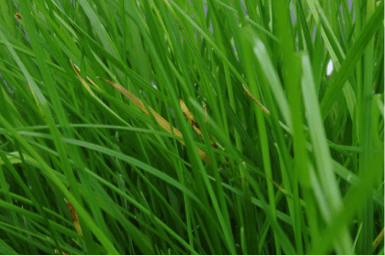In turf management it is crucial to understand the science behind what is happening within your soil profile. To provide a healthy stand of turf we need to start with a soil test, tissue test and a brief introduction to the nutrients purpose. You will then be able to choose the best fertilizer analysis for your particular needs.
Nutrients can be classified into three categories, primary, secondary, and micro. In this blog I will be discussing the primary nutrients that are used in the most abundant quantities behind Carbon (C), Oxygen (O), and Hydrogen (H) which make up 90 to 95 percent of a plant’s dry weight.
Primary Nutrients
Nitrogen (N), Phosphorus (P), and Potassium (K) and good news for us they are the most common ingredients found fertilizers available on the market.
I like to think of the primary nutrients as Up (N), Down (P), All Around (K).
Nitrogen (N) –There is more N in plants than any other element, behind C, H, O which I alluded to above. N is used in the highest amount and is vital for growth rate, density, and provides that beautiful green color for the production of chlorophyll. Nitrogen only promotes top growth, and in excess can be a problem as it isn’t feeding the roots which plants need to sustain themselves.
Symptoms: Yellowing and stunting of older leaves first. Fairly common on sandy soils found in putting greens and on sports turf, especially where clippings are collected.

Phosphorus (P) – Critical for root and seedling development, and maturation. It also increases the turf’s winter hardiness and resilience to fight disease and defends against insect damage.
Symptoms: Older leaves will show dark green coloration with red/purple color along leaf blades.
Potassium (K) – Is required 2nd to (N). K is associated with the movement of water, nutrients, and carbohydrates in the plant’s tissue. It also helps regulate the stomata opening and closing which helps plants tolerance to heat, cold, drought wear and pest resistance.
 Symptoms: Older leaves show yellowing, rolling, and look scorched. It may begin to form necrotic spots on leaf margins.
Symptoms: Older leaves show yellowing, rolling, and look scorched. It may begin to form necrotic spots on leaf margins.
The theme here is that the primary nutrients work in conjunction with each other and aid in your turf’s ability to absorb and distribute nutrients. They are necessary for plants to flourish in the environment. Please keep in mind that nutrient availability is also dependent on your soil pH and soil characteristics as this can vary in different regions of the country.
Which Nutrient Are You Lacking?
Performing a soil testing is a great way to begin developing a balanced turfgrass fertility program, in addition to a tissue test that will also be a great tool that can assist in diagnosing a nutrient deficiency, and verifying a visual diagnosis that you may be experiencing. Soil testing is typically available through state or private labs. Check with the Cooperative Extension of your local University for info on how to submit your soil samples.

Available Solutions
The BioPro lines offers several liquid fertilizer options one being Greens Plus (14-4-10) that is a balanced nutrient blend of N, P, K in the same ratios they are generally found in plant tissue with 65% slow release nitrogen. Another option called TurfPlex 20-2-3 would be a great choice for greens, tees, and high traffic such as those found in sports turf.
Both Greens Plus and TurfPlex are available in Phosphorus free alternatives to accommodate for states that have application restrictions.
Stay tuned for more next week!
Rebecca Knapp
Western Division Sales Manager Golf, Sports Turf and Nursery
